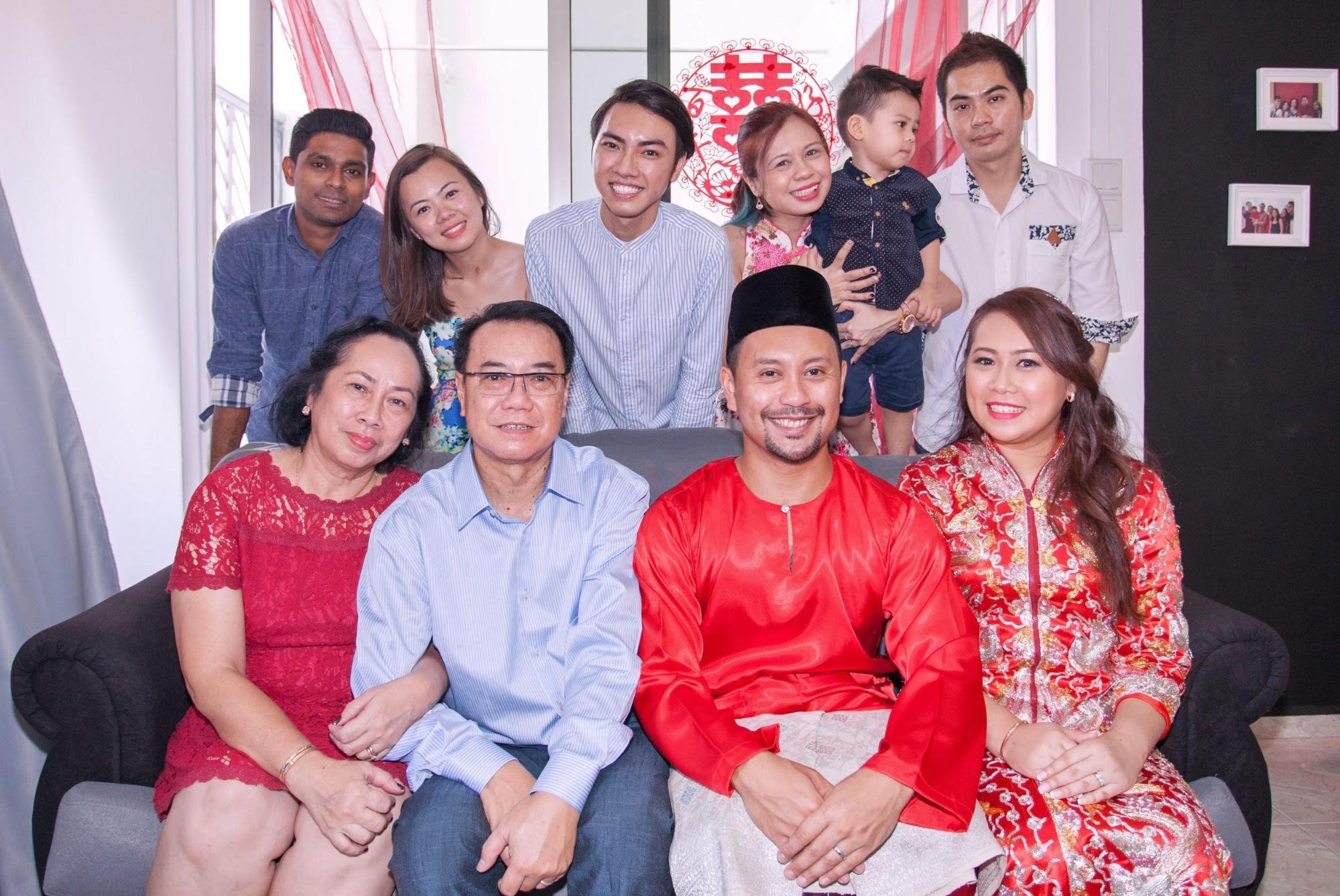“Yes, in cash,” says sales administrator Fiona, 65, before adding, “and a roast suckling pig, four pieces of gold jewellery, twenty boxes of cakes, two bottles of wine, twelve cans of pork trotters, traditional cakes and sweets, and eight banquet tables.”
“And twelve oranges,” she concludes after a breather.
For Chinese newly-weds, a traditional Chinese tea ceremony is expected, but I didn’t realise that the tradition of dowry-giving still exists in modern Singapore.
Curious, I decided to find out if this wedding tradition is still widely practised not only among the Chinese, but the Malay, Indian and Eurasian communities too. The verdict: Yes and no.
Chinese: Dowry Tradition Adds Pomp To Wedding Festivities …
Yes, the Chinese wedding dowry practice of pin jin (聘金), meaning “bride price”, is still popular here according to my married Chinese friends.
Ancient Chinese tradition denotes that in a marriage, the bride’s family loses a daughter whilst her in-laws gain one. Pin jin thus represents the bride’s “worth” by her family. If agreeable, the groom’s side will pay the “bride’s price” as a symbol of goodwill between the in-laws.
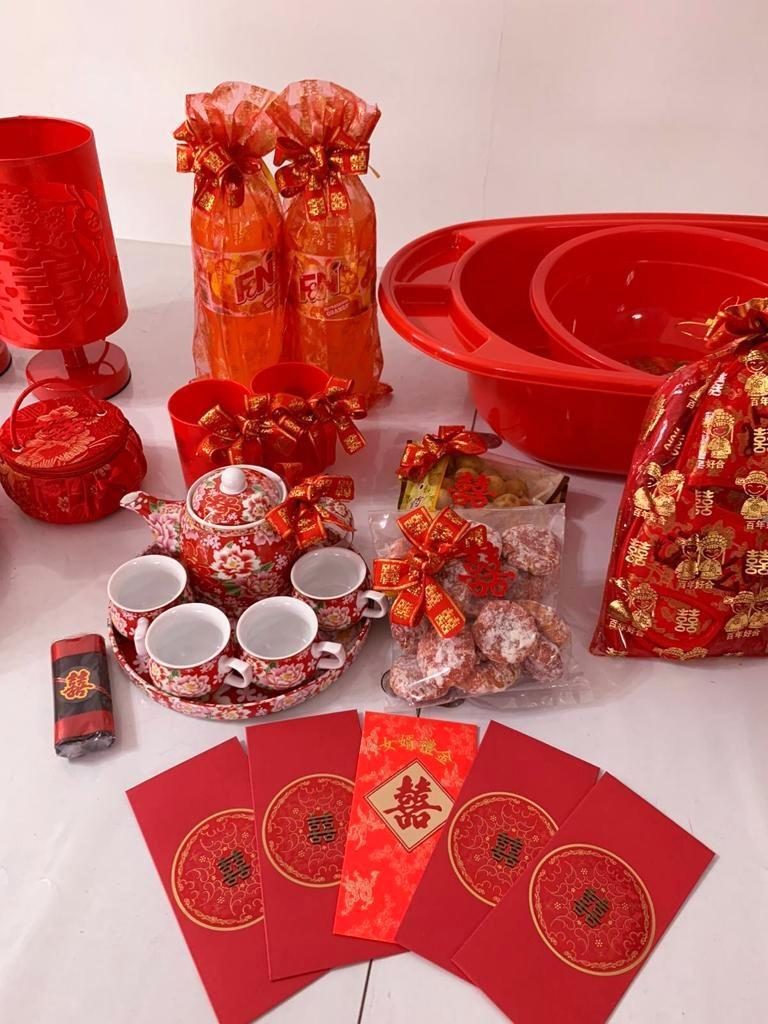
Usually requested by the bride’s family, the groom’s side can also initiate the dowry process. Traditional parents are usually the ones who hammer out the dowry specifics, whilst couples, for the most part, go along with the decisions.

“Ultimately, the couple enjoyed the process and the bride’s family appreciated that we took the wedding seriously and went all out to prepare everything on their side,” she enthuses.
A meeting to discuss dowry details, held on an auspicious day before the wedding at the bride’s home, is a must. This is to avoid any unhappiness arising in both parties.
“This is called ti qin (提親 or ‘propose marriage’) and we will go with a mei po (媒婆 or ‘lady matchmaker’). She’s a mediator in case both families cannot reach an agreement,” says Joan.
Pin jin is generally given in the thousands—as a precious daughter is often called qian jin (千金 or ‘thousand gold’)—and must bear the auspicious number 8. Common amounts range between S$1,888 and S$8,888, although exorbitant demands of five-figure amounts in the higher end are not uncommon apparently!
“It’s very subjective and dependent on affordability. Some families may ask for banquet tables,” Joan asserts. “The amount to return by the bride’s side is not discussed, but it is customary that they return a portion of it to the groom’s side.”
For instance, out of S$6,888—the final pin jin that Joan’s son was asked to give—the bride’s family returned S$6,000 to the groom’s side. In Fiona’s case however, the bride’s side only returned S$2,888 out of the S$12,888 pin jin, but assured her that “the money is kept for (the couple’s) house”.
Once the dowry details are ironed out, the groom will deliver the pin jin and various betrothal gifts to the bride’s family during the guo da li (过大礼) or betrothal ceremony. This is usually held on an auspicious day about two to four weeks before the wedding day. As a show of acceptance, the bride’s family will then hui li (回礼), or return a portion of the gifts—cash inclusive but bar the jewellery—on the same day.
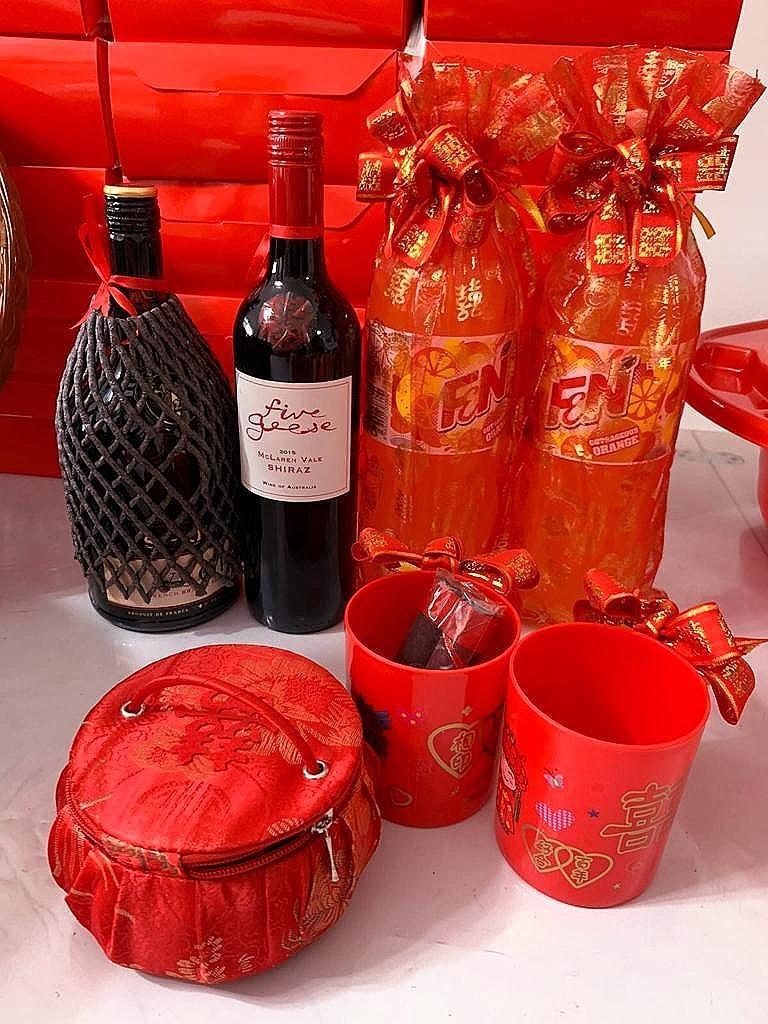
These days however, the si dian jin is practically on every dowry list regardless of the family’s dialect, as is the gratitude angpow or “diaper money” (洗屎喜包) given to the bride’s mother for raising her daughter. The roast suckling pig (symbolising chastity) has also been replaced by cans of pork trotters so that the bride’s family can easily return the gesture during hui li.
As Joan is Hainanese and her daughter-in-law Teochew, the dowry gifts had influences from both dialects. Besides the common items of gold, wine and cakes, dialect-specific gifts include roast suckling pig (Hainanese), angpow for grandma (Teochew), and a pair of Chinese wedding candles (both dialects).
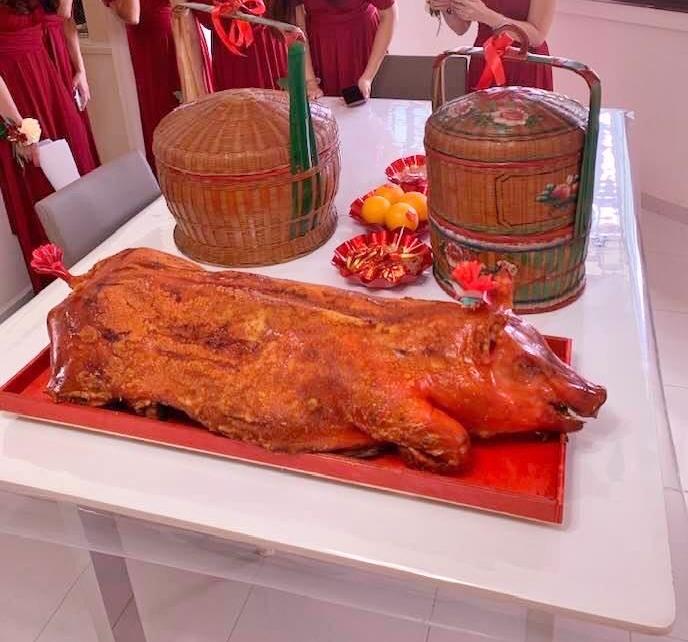
But she and her Hokchew husband decided to go with tradition because “our Chinese roots are also quite strong and so long as it doesn’t clash with our Catholic beliefs.”
Her parents hence received a modest dowry comprising a S$1,888 ang pow, four pieces of gold jewellery, 12 cans of pork trotters, peanuts and sweets, and one cheese cake.
Sorry, one cheese cake?!
“We were supposed to distribute boxes of cakes to relatives but since we sent out e-invites, my mum requested for her favourite cake instead!” Edna explains, laughing.
Also Chinese: … But Not Everyone Would Say “Yes” to Dowries
Not everyone is hooked on tradition though. Some strongly feel that dowry has no place in today’s society.
Benedict, who’s in his 20s, and plans to marry his girlfriend soon, is firmly against the practice because of how it degrades a woman’s value. “You’re putting a price on (the bride’s) head. Like, why should her worth be in dollars, right?” he questions.
But as his girlfriend’s family is very traditional, he was concerned about having to go through the Chinese dowry process. After a heart-to-heart talk though, they decided to spend what would have been “dowry money” on a more rewarding, holiday bonding trip for both families instead. That sounds like a win-win for both sides!
As for health and wellness advisor Matilda, 37 and her beau, they decided to “just ROM” when their HDB flat was ready for collection earlier than expected three years ago, even though her parents were keen on a wedding banquet complete with dowry.
“Dowry and weddings to us is the flaunting and comparing of wealth that we do not possess nor do we wish to burden our parents and family with,” Matilda says adamantly. “The idea behind the dowry’s selling/buying of the bride is also not something we agree with, tradition or not.”
With Malays in Singapore being predominantly Muslim, I learnt that Muslim wedding rites include dowry obligations.
According to the Registry of Muslim Marriages (ROMM), the Hantaran (or dowry) is a customary cash gift given by the groom to the bride’s family for the wedding celebration. This amount must be agreed upon by both parties.
There is also the Mahar—a personal gift either in cash or kind, but no less than S$100—given by the groom to the bride after the solemnisation or akad nikah ceremony. It symbolises his responsibility to fulfil his wife’s everyday needs during their marriage.
Like the Chinese, a pre-wedding meeting is held at the bride’s house where the Hantaran amount will be discussed, along with other wedding matters. The amount is often based on what the groom can afford.
The groom need not be present for this meeting but can simply send his representatives who will also present the bride’s family with an array of gifts. It is then customary for the bride’s family to return the same number of gifts in kind.

Nurul, 29, who received a Hantaran of S$10,000 and a diamond ring as her Mahar for her wedding three years ago, feels that the dowry custom is nothing but beneficial for Muslim brides.
“The money and possessions are not meant for the parents, but for the financial benefit of the bride herself. So why not?” she says. “I’d like to continue this practice in future when my daughter (who is two this year) gets married.”

“On the Malay Muslim side, we have a solemnisation ceremony and the Mahar was the wedding ring,” he says.
For the Chinese part, guided by his Cantonese in-laws, Farhan’s dowry for them comprised “a Hantaran of S$2,888, a four-piece gold jewellery set, a gratitude angpow of S$188, and eight banquet tables.” There was even Chinese-wedding-styled ‘gate-crashing’ and tea ceremony, followed by a halal Chinese banquet.
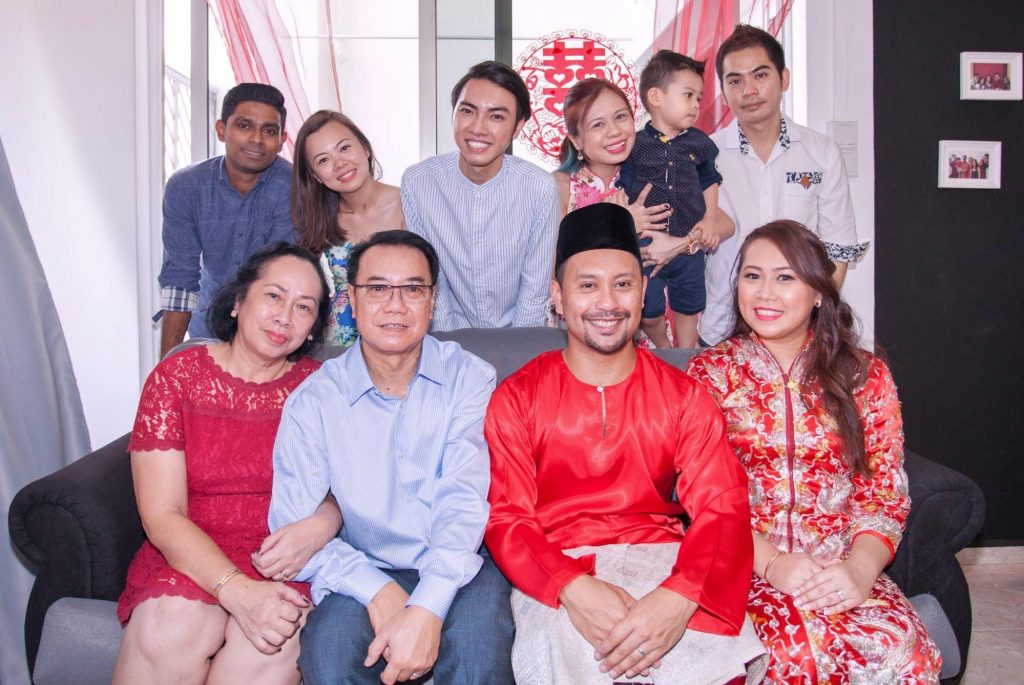
And like their Chinese counterparts, increasingly, there are Malay couples who choose to wed without a dowry. Reasons include they have a house coming at the same time which means the dowry becomes a burden, or the couple had paid for the wedding themselves and hence their parents didn’t need to fork out anything.
In Indian culture, it is traditionally the bride’s family who gives a dowry in the form of cash and/or gifts to the groom’s family instead.
However, according to Indian friends I spoke to for this story, it is seldom practised here in Singapore, regardless whether the wedding is Hindu, Sikh or Catholic.
What is a common feature in many traditional Indian weddings here is the ritual of exchanging gifts between the groom and bride’s families. Gifts may include traditional outfits for the couple, gold jewellery, and edibles such as sweets and dried fruits (symbolising good health).
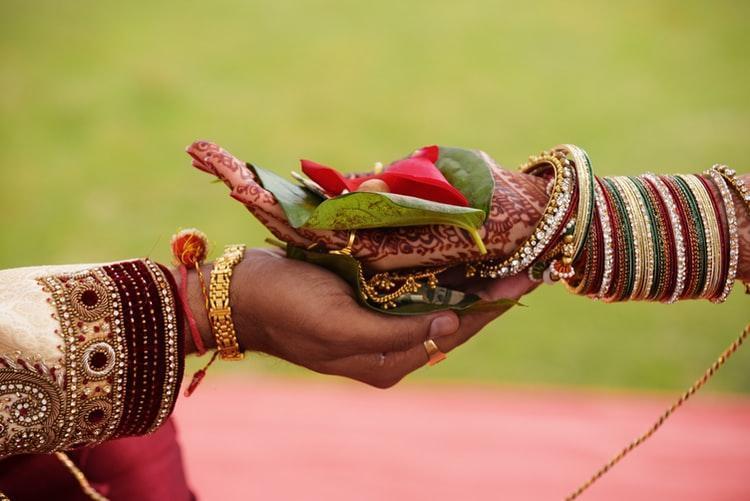
Desvin, who’s in his 20s and has made plans to marry his girlfriend, says, “I think (dowry’s) a way of commodifying a relationship, while some see it as a status symbol. (But) the moment money comes into the picture, the entire idea behind a wedding gets demeaned. Personally, it is not something I approve of.”
Still, mindful that in Hindu weddings, the groom’s parents have a big say in decision making, Desvin respectfully consulted them on the subject of dowry. As his parents did not participate in dowry-giving during their marriage, they see no need for their son’s bride to do so. Rather, the couple is to pool their funds into their upcoming wedding and future home instead.
Retiree Kirpal, 75 and who’s Sikh, explains that in Singapore, it was commonplace in the past for a bride’s family to gift the groom’s family with a dowry comprising pricey presents.
These may include jewellery and Punjabi suit materials for the groom’s parents, gold pieces for the extended family, and even household items such as a washing machine and refrigerator. The groom’s family would then gift a bari or trousseau to the bride, comprising Punjabi suit materials and a jewellery set.
“Over time, this practice has been quietly phased out, partly due to misunderstandings as a result of differing expectations of what was to be given, and what was actually received. The younger generation is also less inclined towards such an elaborate custom,” says Kirpal, mother of three married children, all of whom did not practise dowry.
“These days, gifts are still exchanged but not to the extent of how it used to be in the past, as families are now more practical,” she asserts further. “Sometimes it can be just a simple exchange of garlands between the two families over a milne (to meet) ceremony.”
Many Singapore Eurasians are of the Christian faith, mostly Catholic, and hence their wedding rites usually follow those traditionally practised in a church.
After a Eurasian church wedding ceremony, the wedding reception is commonly held at the church premises or family home, or the party could adjourn to a hotel or restaurant. Key elements are food, music and dancing.
The traditional Eurasian wedding cake is usually sugee cake enrobed in marzipan and royal icing, while a traditional folk song, ‘Jinkli Nona’ (meaning ‘Fair Maiden’), is but one of the many lively tunes usually played at the wedding party for everyone to dance to. The newly-weds’ car is also likely to be decorated with a “Just Married” sign with bottles and cans tied to the bumper.
But here’s the million dollar question – do they practise dowry-giving?
“Traditionally, Eurasians do not give dowries. Our weddings follow the Catholic tradition of masses and then a celebration of lunch or dinner where there is lots of food and dancing,” affirms marketing and advertising professional Tracy, 47.
However, if Eurasians marry into a culture that practices dowry-giving, then yes.
“When my dad got remarried to my stepmother who is a Hakka, we followed the traditional Chinese custom of giving her family a dowry of gold jewellery and food stuff like roast suckling pig,” Tracy reveals.
“Coming from a multicultural background, ultimately it’s all about being inclusive and respecting everyone’s culture and traditions,” she reflects. “Eventually we also started celebrating Chinese New Year including annual reunion dinners.”
Duly enlightened on which ethnic group does or does not practise dowry giving, it’s assuring to know that for those who still observe it, the practice is primarily regarded as an expression of goodwill and respect.
Because if truth be told, the word “dowry” nonetheless bears the unsavoury connotation of “buying a bride”, and it is understandable why some couples prefer to do away with the process entirely.
But if perceived as a boon rather than a bane, a wedding dowry ritual aids in fostering concord and harmony between the newly-weds’ families. This is why wedding dowries are likely to remain trendy for those who embrace tradition.
